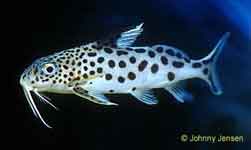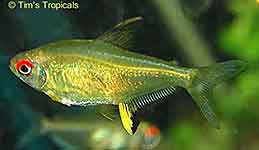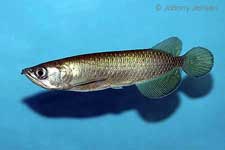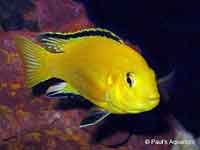Helpful Information for Beginners: What Fish to Buy by Kathryn
I have been a fish keeper for some time. I just thought I'd share some of my knowledge (if you could call it that!) with you all. Hopefully it will help beginners decide what fish to choose. Here we are (long lecture alert! lol)
Start by Cycling Your Tank
Firstly, before even considering stocking your tank, you must complete the Ammonia Cycle. You can do this with fish, or without. For a beginner, a fishless cycle is usually the better option, as you do not have to be concerned by fish dying. While cycling your tank it is best to monitor the water with ammonia, nitrite and nitrate test kits. The ammonia and nitrite will rocket, then slowly reduce. Do not add fish until your nitrite and ammonia are both 0.0, and the nitrate is under 20ppm.
Water Quality Test Kits
A very helpful thing to do would be to buy test kits (the liquid ones are often more accurate) for pH, and hardness of the water. The lower the pH, the more acid the water is, and the higher the pH, the more alkaline it is. Quite simple. A pH of 7.0 is the neutral mark; anything above it is alkaline, below is acidic. Most fish can become accustomed to slightly different water parameters to that which they prefer. It is certainly best to be aware of your pH and hardness, to reduce the likelihood of deaths or some diseases relating to the water parameters of your tank.
Size of Your Tank
You also need to calculate the volume of your tank (width x height x length), so you understand which fish are happy with the size of your tank. It is a common myth that a smaller tank is easier to maintain and look after, but in fact, toxins and other harmful elements are diluted in larger bodies of water, making your fish less likely to become ill. Basically, buy the biggest tank you can afford. As well as being easier to maintain, you can obviously buy more fish, which is something every fishkeeper likes doing!
As a general guide, a tank between 10 - 25 gallons (25 and 100 litres) is considered small. An aquarium of 25 - 50 gallons is normally classed as medium, and a tank with a capacity of 50 - 75 gallons is considered big. You can buy far bigger tanks than that for species and community tanks, but most beginners start off with something in the region of 25 gallonss. It is entirely personal opinion, and more importantly, how much money you have, that dictates the size of tank you can buy.
Suitable Fish for a 10 Gallon Tank
Please be aware that while these fish can survive in a 10 gallon tank, you also need to check if they are compatible with each other. For a 10 gallon tank, pick from: Sparkling Gourami, Peacock gGobies, Endlers live bearers, group of 5-6 male Guppies, single Betta, shrimps, African dwarf frog, Neon Tetras, Dwarf Pencilfish, pygmy corys
Suitable Fish for a 25 Gallon Tank
In addition to the tropical fish above, for a 25 gallon tank, consider: most Tetras, Pearl Danios, Harlequin Rasbora, Cherry Barbs, Blind Cave Fish, Guppies, Platies, Mollies, Blue Ram, Bolivian Ram, Honey Gourami, Dwarf Gourami, Corydoras, Kuhli Loaches
Suitable Fish for a 40 Gallon Tank
For a 40 gallon tank also consider: Sailfin Mollies, Pakistani Loaches, Zebra Loach, Bristlenose Catfish, Pearl Gourami, Three Spot Gourami, Tiger Barbs, Albino Tiger Barbs, Rosy Barbs, Zebra Danios, Ruby-headed Barb, Marbled Hatchetfish, Silver Hatchetfish, Flag Cichlid, Agassiz's Dwarf Cichlid, Kribensis, Angelfish
Buying New Fish
One of the most exciting parts of owning an aquarium is buying new fish. It's hard not to choose a beautiful fish even if it's hard to keep. Check out the section on Livebearers for some good points to consider when choosing your new fish. It's pretty easy to determine whether the fins are in good shape and the scales are free of disease. Choose active fish when buying new fish. Avoid them if they are bloated or have stomachs that looked caved in. Sick fish tend to stop swimming and start resting on the gravel. When buying new fish, choose the fish you like and don't give in if they have trouble catching it. Sick fish are easy to catch.
Acclimate Your New Fish
Many employees tell new fish owners to float the bag of water in the tank for 10ish minutes to equalize the temperature, then open the bag and let the fish swim out. However, this only acclimates your fish to one aspect of the differing waters. You still have gH, pH, water quality, and unseen minerals etc that the poor little guys are not used to. Instead, get a bowl or small bucket and gradually add more tank water to the bag water. Once the pH is equal to that of your tank everything else should be too. Net the fish and put him in the tank, careful not to let a lot of yucky store water into your healthy new aquarium
Comatibility of Tank Mates
Many other factors also come into what fish to buy, such as compatibility with the other fish in your tank, sensitivity to water quality and ensuring you are not overstocking the tank. If you have seen a fish you like, check the galleries here to see what conditions it likes, what tit likes to feed on, whether it likes to school with other fish and what other fish it is compatible with.
Don't Clean Your Filters
A very common mistake that beginners make is cleaning the filters out. Most filter companies actually tell consumers to regularly clean out the filter and replace filter cartridges monthly. This will wipe out your nitrogen cycle and possibly kill your fish since almost all the beneficial bacteria resides in the filter media. These filter companies just want your money. Instead, if your filter is very dirty, gently swish the media, cartridge or sponge in a bucket of freshly syphoned dirty water.
Ultimately, fishkeeping is a hobby, and the most important thing is to enjoy it. And, if you do everything correctly, you will. A beautiful, colorful tank will catch anyone's eye, and drop many a jaw in awe.
THE END lol Thanks for reading.



















